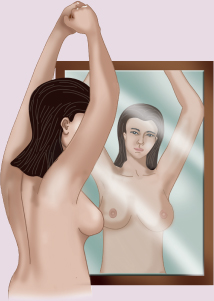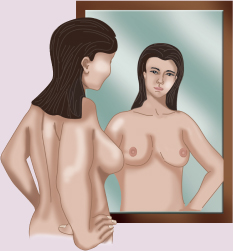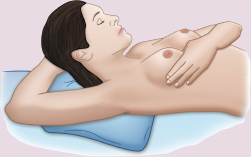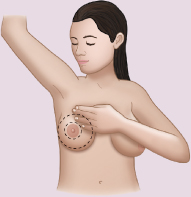BSE has become controversial because the benefits of survival rate may not outweigh the harm of performing unnecessary biopsies (ACS, 2020b). It may be useful if used in combination with regular physical examinations by a primary care provider, mammography, ultrasound, and magnetic resonance imaging (MRI) as needed. Each screening method has its benefits and disadvantages. BSE is an easy and inexpensive method that may help find breast cancer early, when it is most treatable. It is the choice of the individual whether or not to perform BSE. If the client values the benefits more the potential harm, they may want information on how to perform the BSE as follows. It is important to explain to the client to not hesitate to call their primary care provider or gynecologist if they notice any breast changes or lumps. Most breast lumps are benign. Developing a routine can help the client to get to know the characteristics and texture of their breasts. Making notes can also help detect any changes.
Instructions for Client Who Chooses to Perform BSE Inspect your breasts standing in front of mirror and raising your arms over your head. Observe size, shape, and color. Note any swelling, discolorations, dimpling, or nipple drainage by gently squeezing each nipple (usually, there is no drainage). Notify your primary care provider of any changes you see-any dimpling, bulging, nipple discharge or inversion of the skin, any redness, pain or discomfort, rash, or swelling. 
Repeat step #1 standing in front of the mirror, except place your hands on your hips. 
Lie down with a small pillow under your head and your right arm, with your right arm under your head, while you use your left hand to feel your right breast. Use your left hand’s finger pads to feel your right breast, using mild, then moderate, then firm pressure down to your ribcage. Cover all of your breast in a vertical, circular, or wedge pattern, as seen in Figure 16-6. Then, change your position so that you can feel your left breast using your right hand in the same manner. 
Repeat feeling your entire breasts as described in step #3 while standing. This may be easiest to do while showering. Hold your right arm up while feeling with your left fingers. Feel under your armpit with elbow slightly bent to make skin less taut. Repeat on the other side. 
For information about what to do if you find a lump, go to https://www.breastcancer.org/symptoms/testing/types/self_exam. |



